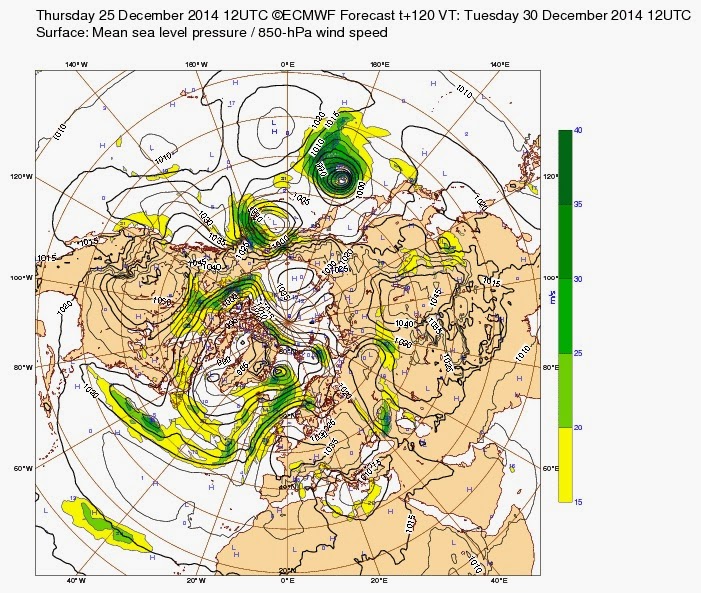~Difference in temperatures between Low and High pressure systems is what matters
Simplified explanation:
A high energy weather event exists when it has more heat or overall greater kinetic (molecular motion) energy than adjoining Pressure systems. On a modest scale, hurricanes or typhoons are high energy systems, on a macro or very large scale Cyclones contain large quantities of heat usually characterized by moisture content or much warmer temperatures along with wind motion. A warm cyclone having gathered heat over a warmer Ocean source, can create more light channels especially if it heads towards Northern usually always colder High Pressure systems. These channels are similar in nature to fiber optic cables which carry light by refraction. A cold system immediately next to a warmer one naturally creates channels at the interface between colder and warmer air. The sunlight present
at many such interfaces can get diverted like a laser light through fiber optic line, and travel beyond the earth's terminator, the edge between light and darkness separating night and day as seen from space. In the High Arctic at present it is dark, but a twilight exists at noon. This twilight changes in intensity due to the position of the sun below the horizon, the extent and type of clouds, pollution or natural aerosols, and finally how much refraction there is in the lower and mid lower atmosphere where normally the Arctic Air is warmest in darkness.
Confirmation of Pressure system driven light variations due to atmospheric refraction.
~please read the Christmas article just below, this is a follow up.
December 25 2014 (left), was visually brighter than January 9 2015 (right). The sun elevation was -12.07 and -12.12 degrees. On camera , the visual perception was confirmed. With exact camera settings and location in both instances.
January 9 lack of redness was likely due to lateness of twilight. When only white
light appears. Finally Dec 25 sun elevation was 0.3 degrees lower than on January 9.
Remarkable demonstration on to how bright Christmas day twilight was, especially since
January 9 had very clear air, especially cleansed by a 2 day blizzard, and the temperature was colder over he same wide area light has travelled. Colder air gives stronger refraction without ducts.
Weather Prognosis
Since before December 25, several Atlantic North-easterner Cyclones have merged into a greater huge sub Polar vortex roughly centered over Greenland, affecting weather over a vast areas spanning from Arctic Eurasia, Scandinavia all the way to mid-west USA. Since Christmas, the temperatures dropped significantly over most of North America, with temperatures higher in he High Arctic. Clearly a reversal in contrast has occurred, instead of a wide deep in dT macro interface as on Christmas, dT were largely diminished. Pressure systems were equally not entirely similar, December 25 had a large intrusion of warm air spanning westwards past Hudson Bay. January 9 light path Cyclone was not so significant East of Hudson Bay.
A very similar prognosis to Dec 25,2014, misleading because temperature Upper Profiles were very different. The Polar Vortex had 4 components, in 2 small anticyclones amidst 2 larger cyclones. The biggest Low centered over Greenland basically a sub-vortex covering half the North circumpolar world.
December 25, 90 W degree longitude line (the only vertical one) demonstrates large difference in Upper Air temperatures, up to 30 C dT between 600 mb (left) and 1000 mb (right). This is what gives more light. As opposed:
January 9, 90W transect had a much milder dT but still quite significant. Therefore less light but still a lot. THe difference in twilight brightness proves yet another very useful
refraction method, this time in judging the magnitude of Cyclonic systems.
The December 25 event, not giving destruction as dramatic as a hurricane was very important not only in revealing twilight brightness effects, but also in affecting the weather over a vast segment of the circumpolar world for weeks to come. WDJan9-13
2015


























